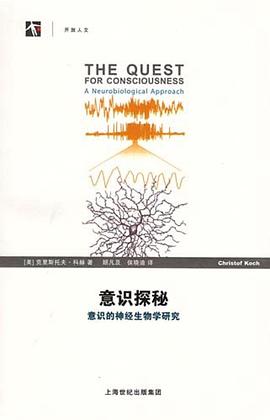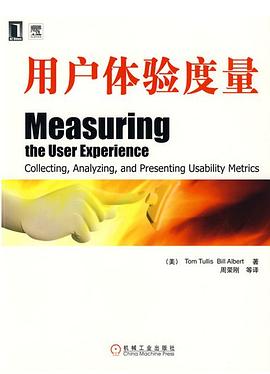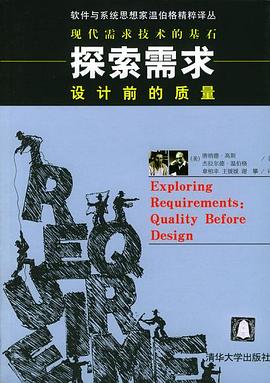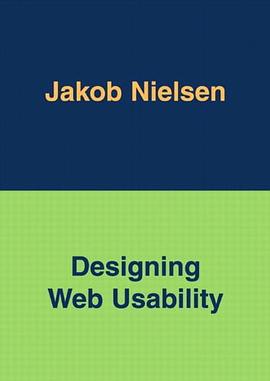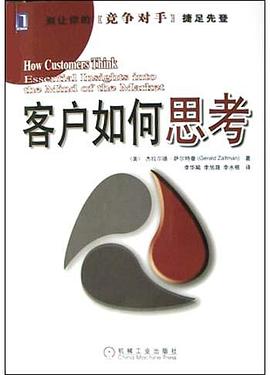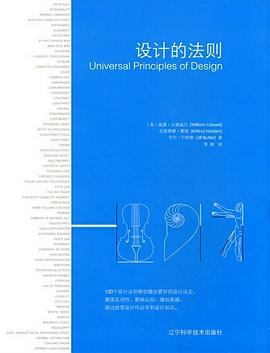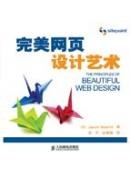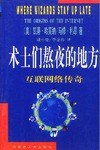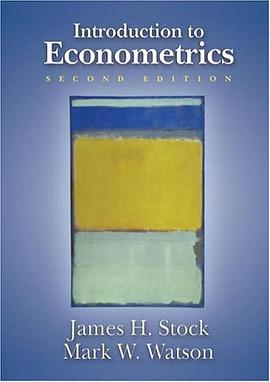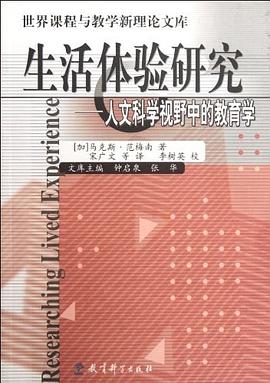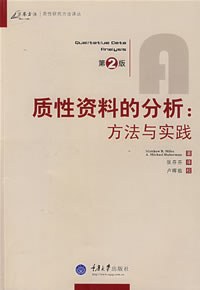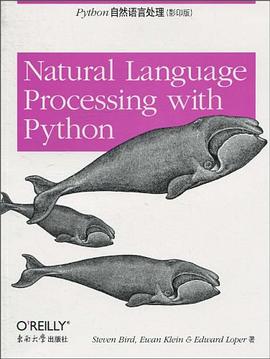

具體描述
《Python自然語言處理(影印版)》提供瞭非常易學的自然語言處理入門介紹,該領域涵蓋從文本和電子郵件預測過濾,到自動總結和翻譯等多種語言處理技術。在《Python自然語言處理(影印版)》中,你將學會編寫Python程序處理大量非結構化文本。你還將通過使用綜閤語言數據結構訪問含有豐富注釋的數據集,理解用於分析書麵通信內容和結構的主要算法。
《Python自然語言處理》準備瞭充足的示例和練習,可以幫助你:
從非結構化文本中抽取信息,甚至猜測主題或識彆“命名實體”;
分析文本語言結構,包括解析和語義分析;
訪問流行的語言學數據庫,包括WordNet和樹庫(treebank);
從多種語言學和人工智能領域中提取的整閤技巧。
《Python自然語言處理(影印版)》將幫助你學習運用Python編程語言和自然語言工具包(NLTK)獲得實用的自然語言處理技能。如果對於開發Web應用、分析多語言新聞源或記錄瀕危語言感興趣——即便隻是想從程序員視角觀察人類語言如何運作,你將發現《Python自然語言處理》是一本令人著迷且極為有用的好書。
著者簡介
Steven Bird是墨爾本大學計算機科學和軟件工程係副教授,以及賓夕法尼亞大學語言數據聯閤會高級研究助理。
剋萊因是愛丁堡大學信息學院語言技術教授。
洛普最近從賓夕法尼亞大學獲得機器學習自然語言處理博士學位,目前是波士頓BBN Technologies公司的研究員。
圖書目錄
1.Language Processing and Python
1.1 Computing with Language: Texts and Words
1.2 A Closer Look at Python: Texts as Lists of Words
1.3 Computing with Language: Simple Statistics
1.4 Back to Python: Making Decisions and Taking Control
1.5 Automatic Natural Language Understanding
1.6 Summary
1.7 Further Reading
1.8 Exercises
2.Accessing Text Corpora and Lexical Resources
2.1 Accessing Text Corpora
2.2 Conditional Frequency Distributions
2.3 More Python: Reusing Code
2.4 Lexical Resources
2.5 WordNet
2.6 Summary
2.7 Further Reading
2.8 Exercises
3.Processing Raw Text
3.1 Accessing Text from the Web and from Disk
3.2 Strings: Text Processing at the Lowest Level
3.3 Text Processing with Unicode
3.4 Regular Expressions for Detecting Word Patterns
3.5 Useful Applications of Regular Expressions
3.6 Normalizing Text
3.7 Regular Expressions for Tokenizing Text
3.8 Segmentation
3.9 Formatting: From Lists to Strings
3.10 Summary
3.11 Further Reading
3.12 Exercises
4.Writing Structured Programs
4.1 Back to the Basics
4.2 Sequences
4.3 Questions of Style
4.4 Functions: The Foundation of Structured Programming
4.5 Doing More with Functions
4.6 Program Development
4.7 Algorithm Design
4.8 A Sample of Python Libraries
4.9 Summary
4.10 Further Reading
4.11 Exercises
5.Categorizing andTagging Words
5.1 Using a Tagger
5.2 Tagged Corpora
5.3 Mapping Words to Properties Using Python Dictionaries
5.4 Automatic Tagging
5.5 N-Gram Tagging
5.6 Transformation-Based Tagging
5.7 How to Determine the Category of a Word
5.8 Summary
5.9 Further Reading
5.10 Exercises
6.Learning to Classify Text
6.1 Supervised Classification
6.2 Further Examples of Supervised Classification
6.3 Evaluation
6.4 Decision Trees
6.5 Naive Bayes Classifiers
6.6 Maximum Entropy Classifiers
6.7 Modeling Linguistic Patterns
6.8 Summary
6.9 Further Reading
6.10 Exercises
7.Extracting Information from Text
7.1 Information Extraction
7.2 Chunking
7.3 Developing and Evaluating Chunkers
7.4 Recursion in Linguistic Structure
7.5 Named Entity Recognition
7.6 Relation Extraction
7.7 Summary
7.8 Further Reading
7.9 Exercises
8.Analyzing Sentence Structure
8.1 Some Grammatical Dilemmas
8.2 Whats the Use of Syntax?
8.3 Context-Free Grammar
8.4 Parsing with Context-Free Grammar
8.5 Dependencies and Dependency Grammar
8.6 Grammar Development
8.7 Summary
8.8 Further Reading
8.9 Exercises
9.Building Feature-Based Grammars
9.1 Grammatical Features
9.2 Processing Feature Structures
9.3 Extending a Feature-Based Grammar
9.4 Summary
9.5 Further Reading
9.6 Exercises
10.Analyzing the Meaning of Sentences
10.1 Natural Language Understanding
10.2 Propositional Logic
10.3 First-Order Logic
10.4 The Semantics of English Sentences
10.5 Discourse Semantics
10.6 Summary
10.7 Further Reading
10.8 Exercises
11.Managing Linguistic Data
11.1 Corpus Structure: A Case Study
11.2 The Life Cycle of a Corpus
11.3 Acquiring Data
11.4 Working with XML
11.5 Working with Toolbox Data
11.6 Describing Language Resources Using OLAC Metadata
11.7 Summary
11.8 Further Reading
11.9 Exercises
Afterword: The Language Challenge
Bibliography
NLTK Index
General Index
· · · · · · (收起)
讀後感
现在的研究方向是NLP,由于以前没有相关的基础知识(特别是数学很差劲),导致学习起来觉得困难重重。后来了解到Python语言在NLP领域有较好的应用空间,于是就学习了Python的基础知识,然后就发现了此书的中文翻译版,于是打印出来认真拜读。它的特点是:实例多(虽然木有中文...
評分现在的研究方向是NLP,由于以前没有相关的基础知识(特别是数学很差劲),导致学习起来觉得困难重重。后来了解到Python语言在NLP领域有较好的应用空间,于是就学习了Python的基础知识,然后就发现了此书的中文翻译版,于是打印出来认真拜读。它的特点是:实例多(虽然木有中文...
評分不过书中还用了一部分篇幅穿插讲解python最基础的编程技术,就不太让人理解了。 读这种书肯定是先对python有一定的了解了。这一点有点定位不清啊。 整体的还是很不错的。为什么发表不了,抱怨我评论太短。 150字还短么
評分入门级别的书,如果你对Python不太了解,里面还有介绍Python基本语法的内容。讲的主要是针对英文的自然语言处理,关于中文的基本没有,但大致思路是相通的。 这本书是基于python2的。里面有些代码已经运行不了了。但是作者在http://www.nltk.org/book/ 有本书基于python3的修订...
評分现在的研究方向是NLP,由于以前没有相关的基础知识(特别是数学很差劲),导致学习起来觉得困难重重。后来了解到Python语言在NLP领域有较好的应用空间,于是就学习了Python的基础知识,然后就发现了此书的中文翻译版,于是打印出来认真拜读。它的特点是:实例多(虽然木有中文...
用戶評價
基本是nltk的使用說明。。。標題有些誤導瞭
评分書是好書,但是讓這小子翻譯爛瞭
评分大概就是隻能當nltk的簡易版白癡文檔用,後麵的玄學又看不懂。神奇(所以不敢說差)
评分評價:這本應該叫《NLTK入門指南>。沒瞭。
评分評價:這本應該叫《NLTK入門指南>。沒瞭。
相關圖書
本站所有內容均為互聯網搜索引擎提供的公開搜索信息,本站不存儲任何數據與內容,任何內容與數據均與本站無關,如有需要請聯繫相關搜索引擎包括但不限於百度,google,bing,sogou 等
© 2025 book.quotespace.org All Rights Reserved. 小美書屋 版权所有

